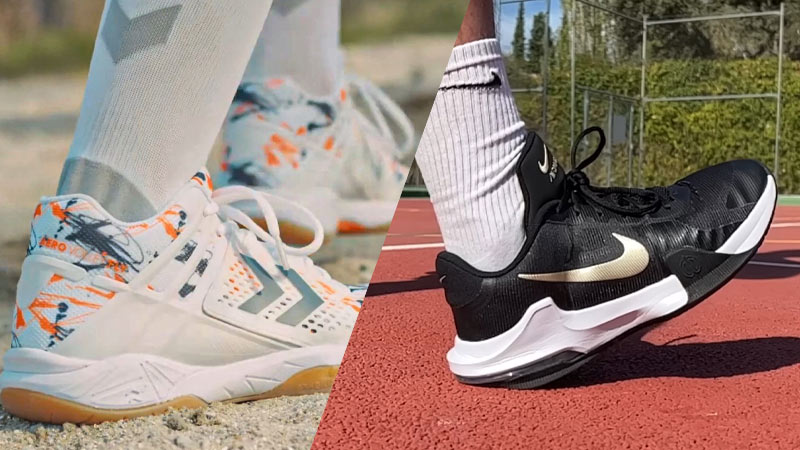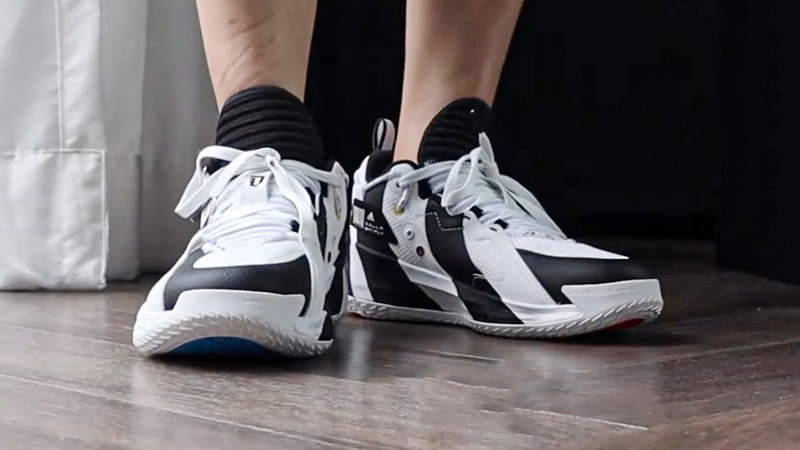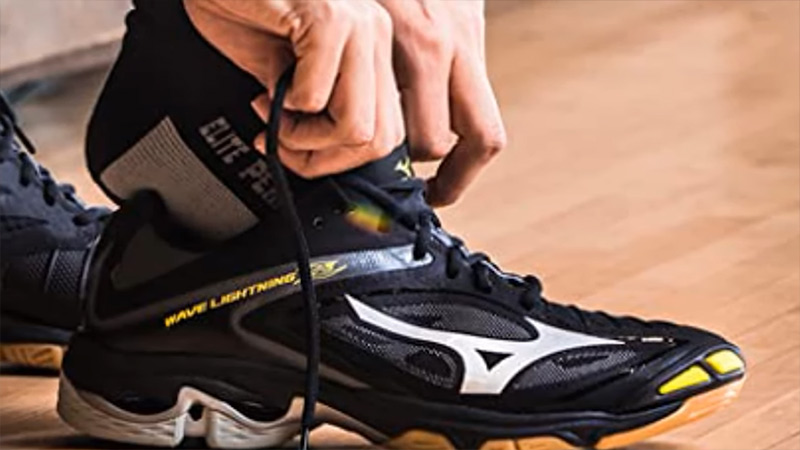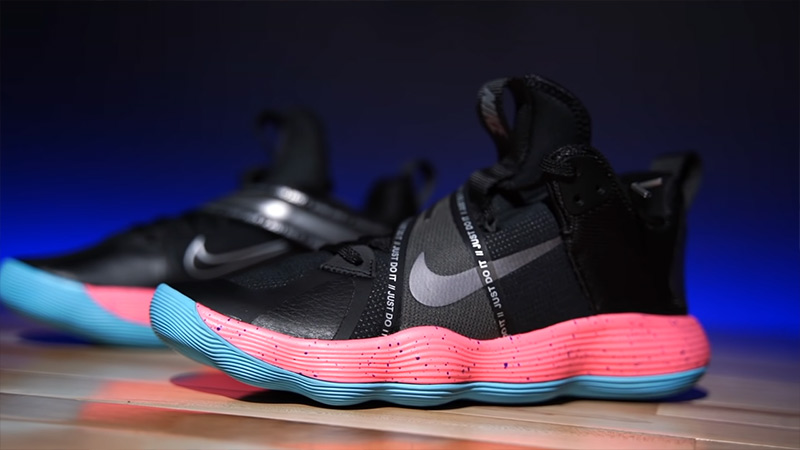When it comes to playing sports like basketball and volleyball, having the right footwear can make a significant difference in your performance and overall experience on the court.
While basketball shoes are specifically designed for the demands of basketball, many athletes wonder if they can also be suitable for volleyball.
In this article, we will explore whether are basketball shoes good for volleyball and specifically address the topic of Jordan basketball shoes.
Are Basketball Shoes Good for Volleyball?
Basketball shoes are known for their high-top design, cushioning, ankle support, and traction. These features are designed to cater to the quick lateral movements, jumps, and cuts that are common in basketball.
Volleyball, on the other hand, involves more frequent and explosive jumps, quick lateral movements, and constant changes in direction. The requirements of the two sports may seem similar, but there are some important differences to consider.
Traction
Basketball shoes are designed with specific patterns on the outsole to provide excellent grip on indoor basketball courts. These patterns may not be optimized for the movements and surfaces encountered in volleyball.
Volleyball courts often have a slightly different texture and require shoes with patterns that offer a better grip on the court.
While basketball shoes can provide some level of traction, volleyball-specific shoes tend to have outsoles that are better suited for the sport.
Weight
Basketball shoes are often heavier than volleyball shoes. The extra weight in basketball shoes is intended to provide stability and support for the player during intense movements.
Volleyball shoes, on the other hand, are typically lighter to allow for quicker movements and increased agility on the court. The lighter weight of volleyball shoes can enhance a player’s speed, acceleration, and jumping ability.
Cushioning
Both basketball and volleyball involve a significant amount of jumping and landing. Basketball shoes often have thicker cushioning in the heel to absorb the impact from high jumps and hard landings.
In volleyball, players also require good cushioning, but the emphasis is more on responsiveness and quick movements. Volleyball shoes are designed to provide adequate cushioning without sacrificing agility and court feel.
What’s the Difference Between Basketball and Volleyball Shoes?

The difference between basketball shoes and volleyball shoes lies in their design and features, which are tailored to the specific demands of each sport. Here are the key distinctions:
Traction
Basketball shoes are designed with specific patterns on the outsole to provide excellent grip on indoor basketball courts. These patterns are optimized for the quick lateral movements and changes in direction that occur in basketball.
In contrast, volleyball shoes have outsoles with patterns that are specifically designed to provide optimal traction on volleyball courts, which often have a slightly different texture.
Weight
Basketball shoes are generally heavier than volleyball shoes. The additional weight in basketball shoes is intended to provide stability and support for the player during intense movements, such as jumps and cuts.
Volleyball shoes, on the other hand, are typically lighter to allow for quicker movements and increased agility on the court, which is important in a sport that requires constant changes in direction and explosive jumps.
Ankle Support
Basketball shoes often feature a high-top design that extends above the ankle to provide additional support and stability to the player’s feet and ankles.
This design is meant to protect against injuries, particularly in basketball where players frequently make aggressive cuts and landings.
In contrast, volleyball shoes typically have a lower-cut design, offering more freedom of movement and flexibility for quick lateral movements and jumps.
Flexibility
Basketball shoes are designed to provide a balance of stability and flexibility. They offer support and structure to withstand the demands of basketball movements.
Volleyball shoes prioritize flexibility to allow players to move quickly and change directions rapidly on the court. The flexibility of volleyball shoes helps enhance agility and maneuverability during gameplay.
While there may be some overlap in the general athletic characteristics of basketball and volleyball shoes, the specific design features mentioned above are what differentiate them and make them better suited for their respective sports.
What Type of Shoe Is Best for Volleyball?

The best type of shoe for volleyball is a dedicated volleyball shoe. Volleyball-specific shoes are designed to meet the unique demands of the sport and provide optimal performance, comfort, and support for volleyball players.
Here are some key features to look for when choosing the best volleyball shoe:
Lightweight Construction
Volleyball shoes are typically lighter than basketball shoes. The lighter weight allows for quicker movements, increased agility, and enhanced responsiveness on the court.
Look for shoes that offer a balance between lightweight design and durability.
Cushioning and Shock Absorption
Volleyball involves a significant amount of jumping and landing, so good cushioning is essential. Look for shoes with responsive cushioning in the midsole that provides impact absorption and helps to reduce the strain on your joints and muscles.
Breathability
Volleyball is a fast-paced sport that can make your feet sweat. Look for shoes with breathable upper materials, such as mesh or synthetic overlays, that allow for proper airflow and ventilation. This helps to keep your feet cool, dry, and comfortable during intense gameplay.
Support and Stability
While volleyball shoes typically have a lower-cut design compared to basketball shoes, they should still provide adequate support and stability.
Look for shoes with a well-fitting upper that securely holds your foot in place, providing stability during lateral movements and jumps. Some shoes may also have additional features like midfoot straps or internal support systems for added stability.
Flexibility
Volleyball shoes should offer flexibility to allow for quick movements and rapid changes in direction. Look for shoes that provide a balance between flexibility and support, allowing you to move freely on the court while maintaining stability.
It’s important to note that every individual has unique preferences and needs, so trying on different volleyball shoes and finding the one that feels comfortable and supportive for your feet is crucial.
Consider factors such as foot shape, arch support, and any specific requirements you may have for your playing style.
Why Don’t Basketball Players Wear Volleyball Shoes?

Basketball players generally do not wear volleyball shoes because each sport has its unique footwear requirements and design considerations. Here are some reasons why basketball players typically do not wear volleyball shoes:
Traction
Basketball shoes and volleyball shoes have different outsole designs optimized for their respective sports. Basketball shoes have specific patterns and rubber compounds that provide excellent traction on indoor basketball courts.
Volleyball shoes, on the other hand, are designed with outsole patterns that offer superior grip on volleyball courts, which have different textures and surfaces.
Wearing volleyball shoes on a basketball court may compromise the traction needed for basketball-specific movements.
Ankle Support
Basketball shoes often feature a high-top design that extends above the ankle to provide additional support and stability.
This design is intended to protect against ankle injuries that are more common in basketball due to the aggressive cuts, jumps, and landings involved.
Volleyball shoes, in contrast, usually have a lower-cut design to allow for more freedom of movement and flexibility during quick lateral movements and jumps.
Weight and Agility
Basketball shoes are generally heavier than volleyball shoes. The additional weight in basketball shoes provides stability and support for the intense movements involved in basketball, such as cutting, jumping, and post-play.
Volleyball shoes, on the other hand, are designed to be lightweight to enhance agility, quick movements, and acceleration on the volleyball court.
The lighter weight of volleyball shoes allows players to be more agile and responsive to the dynamic nature of the sport.
While basketball and volleyball share some similarities in terms of lateral movements and jumping, there are distinct differences in the specific demands of each sport.
Therefore, wearing sport-specific shoes is generally recommended to optimize performance and reduce the risk of injuries associated with improper footwear.
FAQs
Can basketball players wear volleyball shoes for casual play or training?
Yes, basketball players can choose to wear volleyball shoes for casual play or training if they find them comfortable and suitable for their needs.
However, for competitive basketball games, they typically opt for basketball shoes that are specifically designed to meet the demands of the sport and provide optimal performance.
Are there any advantages to wearing volleyball shoes for basketball?
While basketball shoes are the preferred choice for basketball players, some individuals may find certain advantages in wearing volleyball shoes for basketball.
Volleyball shoes are often lightweight and provide good lateral stability, which can be beneficial for players who prioritize agility and quick movements.
However, it’s important to consider that volleyball shoes may lack the specific features and support designed for basketball movements and court conditions.
Do basketball shoes restrict movement in volleyball?
Basketball shoes are not ideally designed for the specific movements and court surfaces of volleyball. Their heavier weight and higher-top designs can potentially restrict movement and hinder agility in volleyball.
Volleyball shoes, on the other hand, offer a lighter and more flexible construction, allowing for greater freedom of movement and enhanced responsiveness on the court.
Can basketball shoes be used for volleyball if no volleyball shoes are available?
In situations where volleyball shoes are not available, using basketball shoes for volleyball can be a temporary solution. While not ideal, basketball shoes can still provide some level of traction, cushioning, and support.
It’s important to ensure that the basketball shoes have a good grip on the volleyball court and that they are comfortable and do not impede your performance or increase the risk of injuries.
Why don’t basketball shoe manufacturers create hybrid models for basketball and volleyball?
Basketball and volleyball have unique footwear requirements and design considerations. Creating a hybrid shoe that perfectly meets the needs of both sports can be challenging.
Manufacturers typically invest in designing and producing specialized shoes for each sport to optimize performance, support, and comfort.
While some features may overlap, such as cushioning and lateral stability, the specific demands of basketball and volleyball warrant separate shoe designs to maximize performance and minimize the risk of injuries in each sport.
Final Words
So, are basketball shoes good for volleyball? Now you know the answer. While basketball shoes, including Jordan basketball shoes, can offer some level of performance on the volleyball court, they are not the ideal choice for the sport.
Volleyball-specific shoes are specifically designed to meet the demands of the sport, providing optimal traction, lightweight construction, and cushioning that caters to the quick movements and jumps unique to volleyball.
If you are serious about playing volleyball, investing in a pair of dedicated volleyball shoes would be the best choice to optimize your performance and minimize the risk of injury on the court.







